Huntington land gift named ‘Monroe County Nature Preserve’ but commissioners leave door open to history-based change
When the announcement came a month ago that 409 acres southeast of Bloomington had been donated to Monroe County by Nancy Huntington, the piece of land did not have a name. It does now, after county commissioners approved a resolution establishing the Monroe County Nature Preserve.
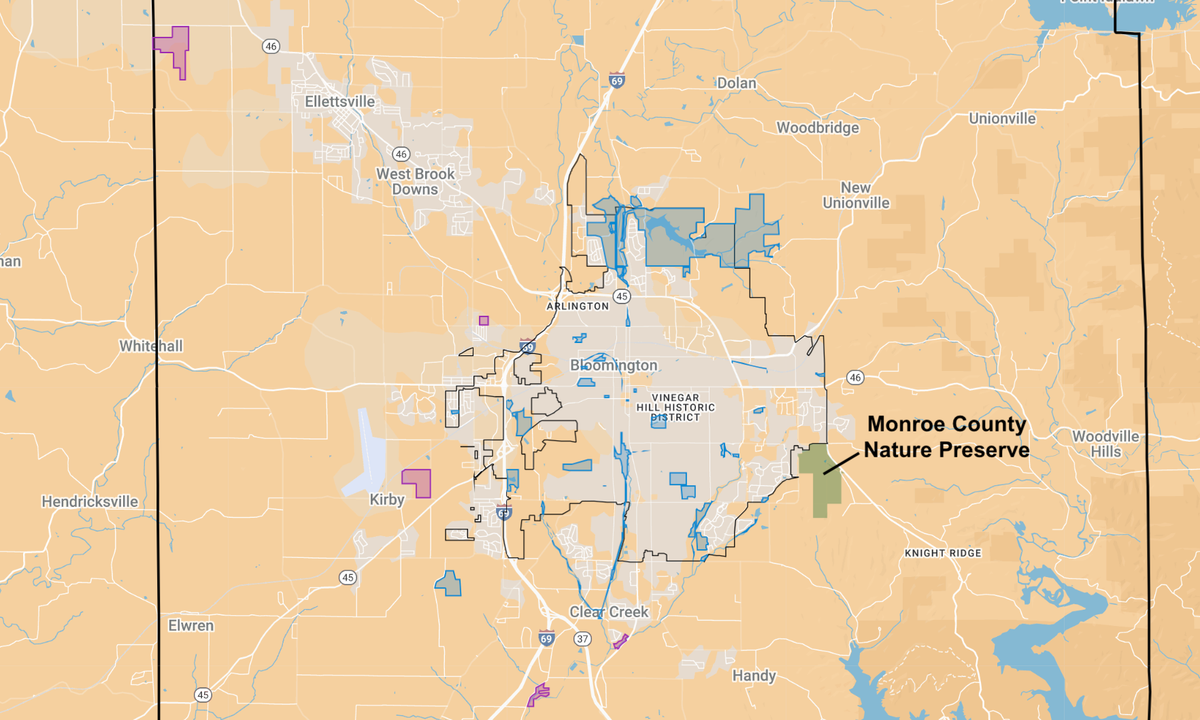
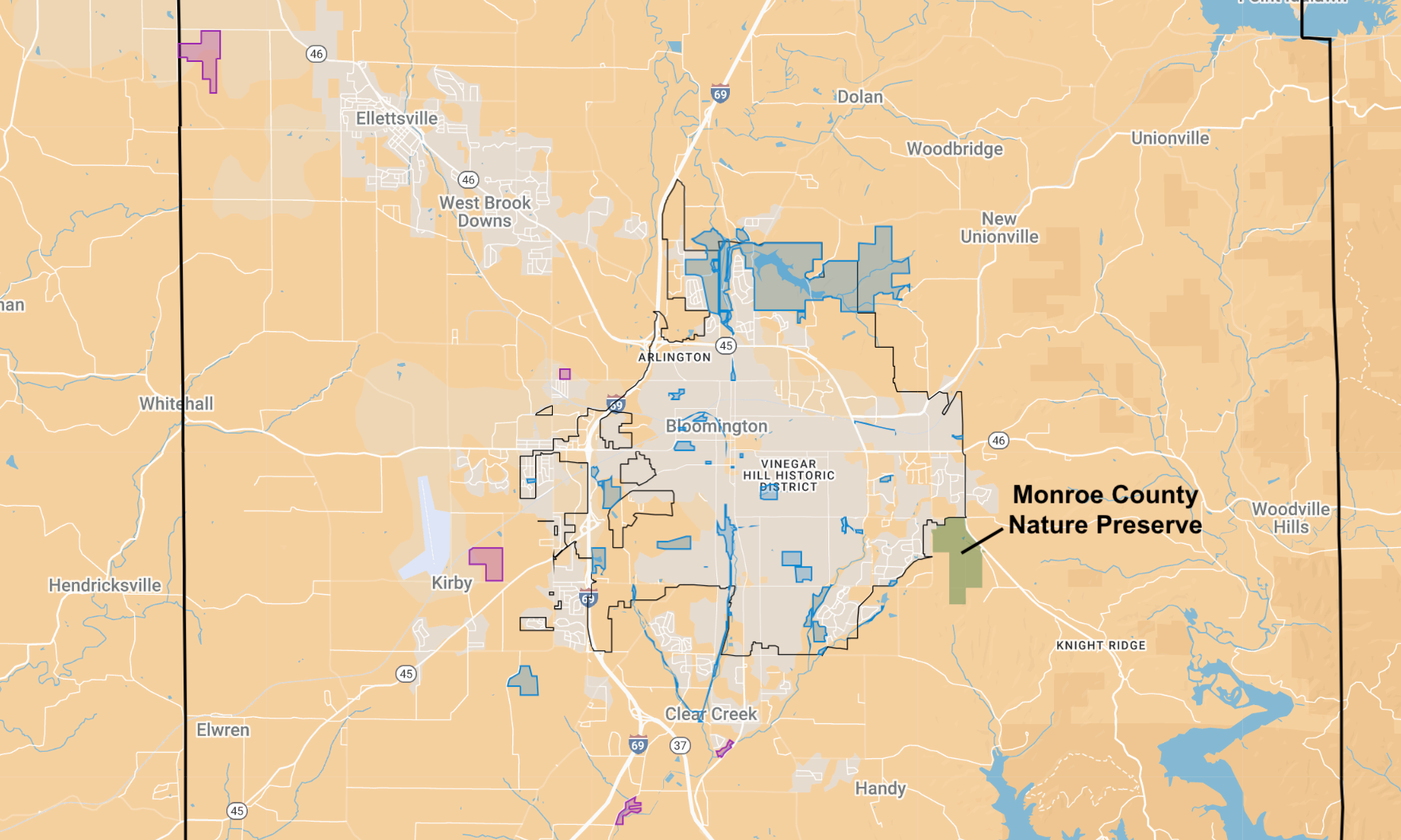
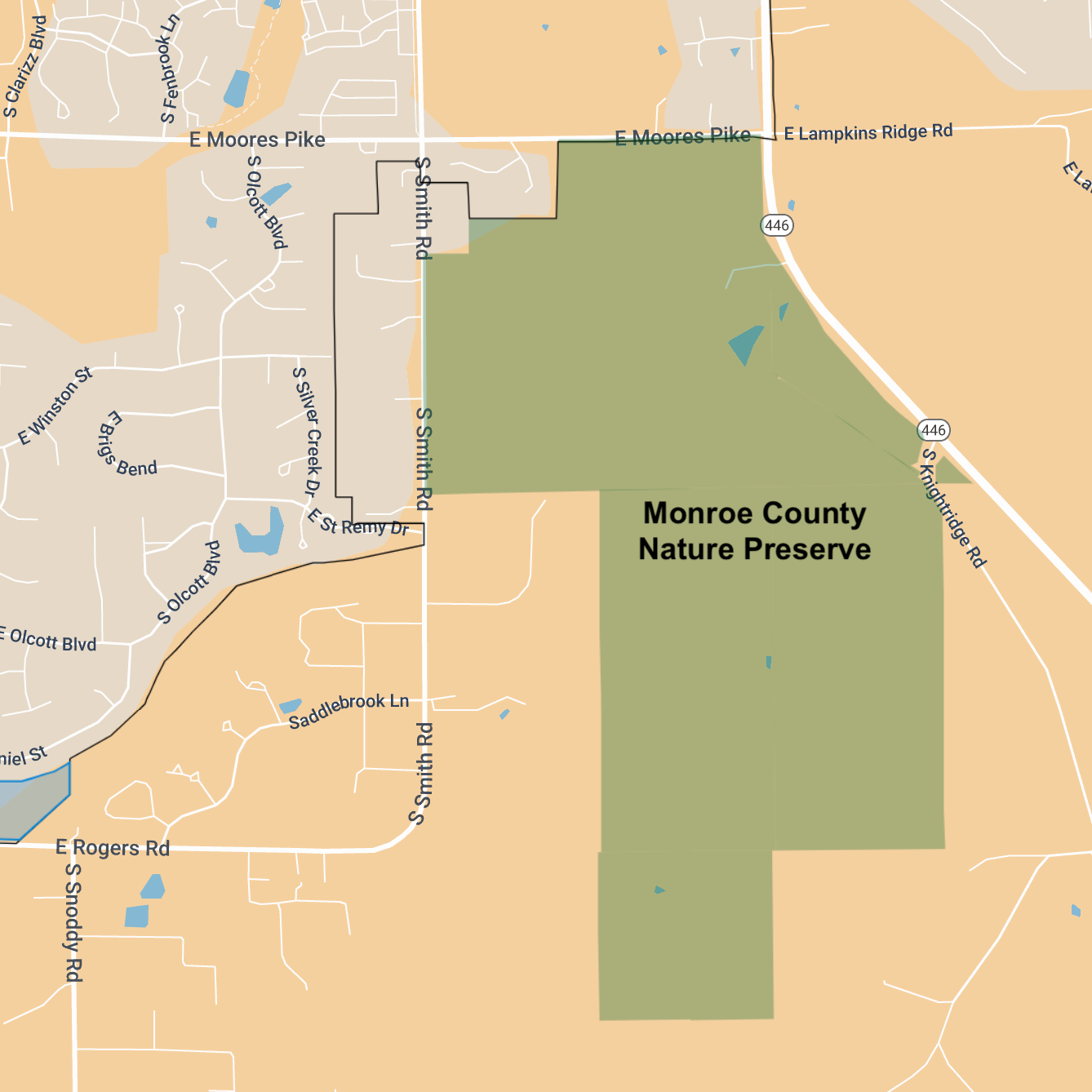
The maps are by The B Square with data from Monroe County and city of Bloomington government. (The purple shaded areas are a part of the Monroe County parks system. The blue shaded areas are a part of the city of Bloomington parks system)
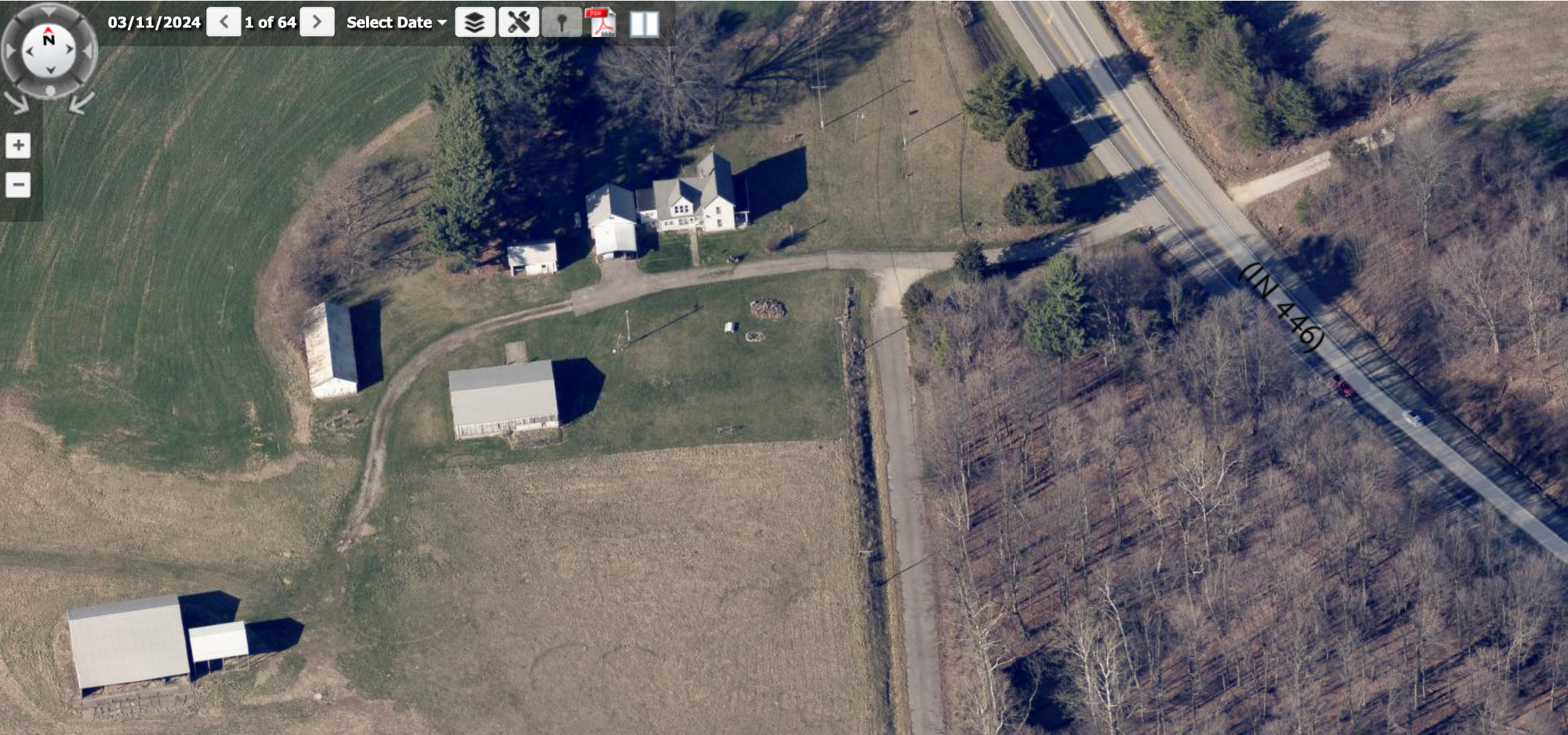
When the announcement came a month ago that 409 acres southeast of Bloomington had been donated to Monroe County by Nancy Huntington, the piece of land did not have a name.
It does now, after county commissioners on Thursday morning approved a resolution establishing the Monroe County Nature Preserve. At Thursday’s meeting, commissioner Julie Thomas said, “This is such a gift to Monroe County, to our residents today, to residents in the future,” adding that the land is “huge in terms of acreage, but the thoughtfulness about that is really impressive.”
Also at Thursday’s meeting, commissioner Jody Madeira called the donation of land “very generous” adding, “It’s kind of symbolic that it’s in the heart of our community on the east side.” That’s a location where a lot of people will use it to recreate, Madeira said.
The farmhouse on the land is visible from SR 446 on the way from Bloomington down to the Monroe Lake causeway. That’s a trip that passes two state recreation areas—Pine Grove and Paynetown—before arriving at Cutright.
Commissioner Lee Jones did not attend Thursday’s meeting, but is quoted in the county’s news release saying, “Having a preserve so close represents a once-in-a-generation addition to our community’s selection of natural sites.”
Even though commissioners approved the name on Thursday, there’s a possibility that it could change. That’s based on the feedback from the county’s historic preservation board of review (HPBR), which met on Monday and discussed the naming question. The idea is that facts about the property could eventually be revealed that should have an influence on the name.
In a letter to county commissioners, HPBR member Devin Blankenship
wrote, “The Historic Preservation Board supports the name Monroe County Nature Preserve, but would like to recognize that future research and findings may uncover details worthy of naming consideration.”
At Thursday’s meeting, county commissioner Julie Thomas reacted to the idea that information might come to light that could cause the naming question to be revisited: “I’m perfectly fine with that…”
Thomas and commissioner Lee Jones both attended Monday’s meeting, when HPBR members expressed their dissatisfaction about not being kept in the loop about the property and the naming question—because it includes an 1880 farmhouse that counts as a “contributing” structure in a 2015 survey recorded in the SHAARD (State Historic Architectural and Archaeological Research Database). That means that a property adds to the historical or architectural significance of an area, in this case for its connection to the agricultural history of the area.
Based on Thomas’s remarks at Monday’s HPBR meeting, county commissioners would support just giving someone the farmhouse and outbuildings at no cost, if they were willing to move the buildings to some other location.
But the county government is not looking to put any money into repair or preservation of the buildings. Kelli Witmer, who is director of the county’s department of parks and recreation told HPBR members on Monday, “We are not going to invest one penny into the structures.”
Witmer continued, “We have to take all of our funds and we’re going to invest them in parks recreation activities like trails, maybe a shelter, house, gardens, tree plantings, things like that.” Witmer added that one of several reasons the county would not try to maintain the house as a rental is because of ADA concerns.
The specific recreational purposes that the county has planned for the property was a highlight of a news release from the county government that was issued as soon as commissioners took their vote on Thursday morning establishing the Monroe County Nature Preserve.
The amenities are to include an extensive grass trail system; a well-maintained, ADA accessible portable toilet; an equipment storage building; a small parking lot and vehicle access off Knightridge Road; interconnectivity between the trails of the nature preserve and the existing neighborhood trail system; tree plantings, forest, and wildlife management.
Witmer told The B Square the idea is to create a kind of trailhead where people can start their hikes. The trails will eventually lead through re-forested farmland, Witmer said.
Based on the county’s property tax information, the combined parcels making up the nature preserve have generated around $12,500 in tax revenue for the county the last few years. Accepting the land means forgoing that revenue. But Witmer told The B Square that the Huntington Trust is obligated under the terms set up by Nancy Huntington, to provide Monroe County government with the proceeds from the invested funds each year, based on a formula, which means the amount could vary from year to year. In the first year, Witmer estimated the figure at around $80,000.
Under the newly adopted County Development Ordinance (CDO), the land donated by Huntington is zoned Conservation Residential 2.5 (CVR), which has a minimum lot size of 2.5 acres.
Responding to a hypothetical question from The B Square about the amount of housing that could be built on 409 acres that are zoned CVR was director of Monroe County’s planning department, Jackie Jelen. She broke it down in an emailed message based on access to sanitary sewer service or access to a septic system.
If it has access to sanitary sewer service, the bottom line is: 128 lots measuring 2.5 acres each, according to Jelen. That’s based on undertaking a major subdivision, which means each lot would need at least 2.5 acres of buildable area. That would require new roadways, stormwater infrastructure and sewer extensions, so her department typically assumes about 20% of the acreage is not for available for development, Jelen wrote. Subtracting 20% of 400 acres leaves 320 acres. Assuming all of that is accessible and buildable, that works out to 128 lots.
If it has access only to septic systems, then the bottom line is up to 40 10-acre lots, according to Jelen.
Based on the discussion at Monday’s meeting of the HPBR, that group will now be taking a closer look into the historical background of the site. It’s not that there is any known fact about the land that makes the group think there should be a different name. But they allow for the possibility that a secret room could be discovered in the house that was used for the Underground Railroad, or that it’s learned that the site was the location of a large Native American settlement.
Dynamic Map
The purple shaded areas are a part of the Monroe County parks system. The blue shaded areas are a part of the city of Bloomington parks system.


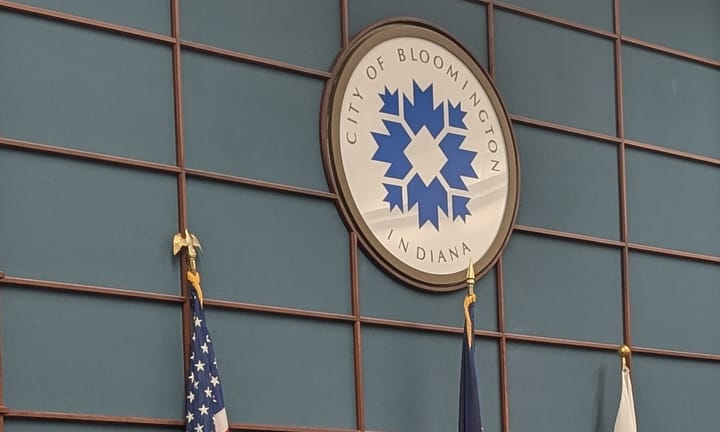
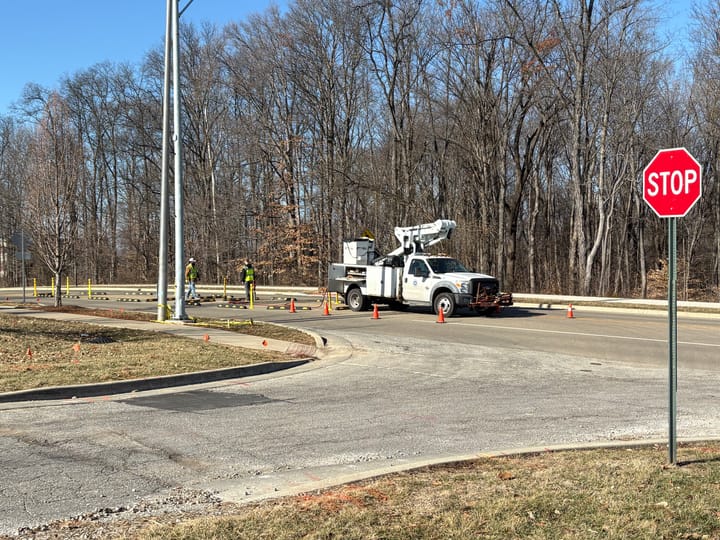
Comments ()